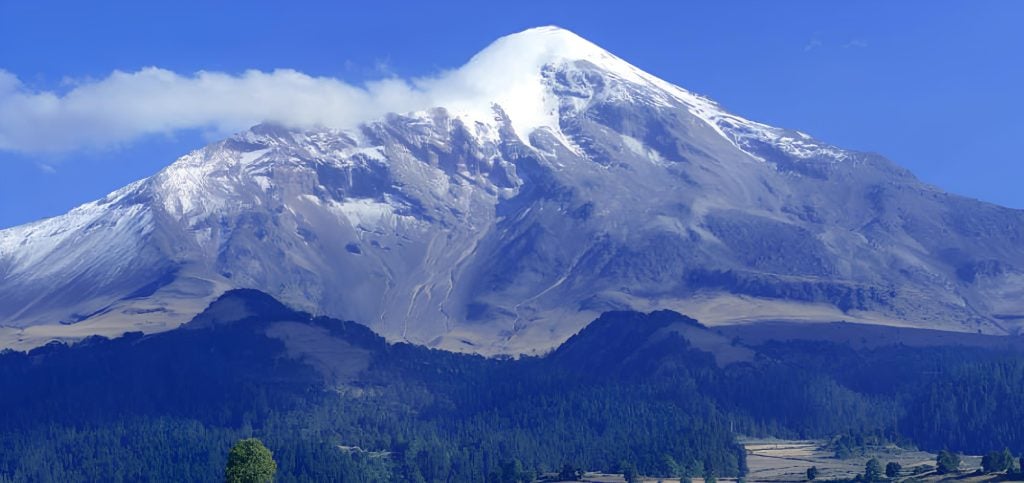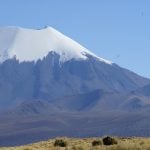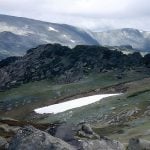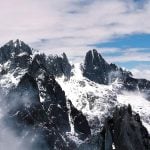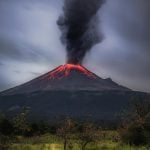Mount Pico de Orizaba: Mexico’s Highest Peak
Pico de Orizaba (Citlaltépetl) is the highest peak in Mexico and the third highest in North America, standing at 5,636 meters (18,491 feet). As one of the largest stratovolcanoes in the region, it offers climbers both technical and physical challenges. With breathtaking landscapes and diverse climbing routes, it attracts adventure seekers from around the world. Mount Pico de Orizaba: Mexico’s Highest Peak
This guide covers Pico de Orizaba’s history, climbing routes, best seasons, travel information, equipment recommendations, and mountaineering tips to help you prepare for an unforgettable ascent.
History of Pico de Orizaba
The indigenous Nahuatl people called Pico de Orizaba “Citlaltépetl,” meaning “Star Mountain.” It was considered sacred by the Aztecs and Totonacs. According to local legends, Citlaltépetl holds the spirit of a fallen warrior.
The first recorded ascent was in 1848 by F. Maynard and William F. Reynolds, though it’s believed that indigenous people reached the summit long before. Today, Pico de Orizaba is one of the most popular climbing destinations in North America for both experienced mountaineers and volcano trekking enthusiasts.
Where is Pico de Orizaba? How to Get There?
Pico de Orizaba is located on the border of Veracruz and Puebla states in eastern Mexico. The most common climbing route starts from Puebla, but access from Veracruz is also possible.
Transportation Options
🛫 Nearest Airports:
- Mexico City International Airport (MEX) (~4-5 hours by car)
- Veracruz International Airport (VER) (~3 hours by car)
🚗 By Road:
- From Mexico City: Drive to Tlachichuca (~4 hours) via Puebla.
- From Veracruz: Drive to Orizaba (~2 hours), then continue to Tlachichuca.
🚙 Transfer to the Base Camp:
From Tlachichuca, climbers take 4×4 vehicles to Piedra Grande Hut (4,270 m / 14,009 ft), the standard starting point for summit attempts. The ride takes about 2 hours and is usually arranged through local guides or climbing tour operators.
Climbing Routes to Pico de Orizaba
Several routes lead to the summit, but the most popular ones are:
1. Jamapa Glacier Route (Standard Route)
- Difficulty Level: Moderate
- Starting Point: Piedra Grande Hut (4,270 m)
- Climbing Duration: 2-3 days
- Highlights: Volcanic landscapes, glacier crossing, relatively safe ascent
The Jamapa Glacier Route is the most commonly used route, but it requires experience in glacier climbing. The final 500 meters have a 35-40 degree slope, requiring crampons and an ice axe for a safe ascent.
2. Southwestern Routes (Ruta Sur & Espolón de Oro)
- Difficulty Level: More technical
- Starting Point: Atzitzintla or Ciudad Serdán
- Climbing Duration: 2-3 days
- Highlights: Less crowded, rock and ice climbing sections
These routes are best suited for experienced climbers. The Espolón de Oro route, in particular, requires strong technical climbing skills.
Best Time to Climb Pico de Orizaba
The best time to climb Pico de Orizaba is November to April, when conditions are most stable.
- November-March: Cold but dry conditions, stable snow and ice.
- April-May: Warmer, but glaciers begin to melt.
- June-October: Rainy season, high risk of rockfall and avalanches.
Essential Gear and Preparation
Pico de Orizaba is a high-altitude mountain with glaciers, so proper equipment is crucial.
✅ Basic Mountaineering Gear: Crampons, ice axe, helmet, rope
✅ Clothing: Layered clothing for extreme cold
✅ Sleeping Bag & Tent: Rated for -10°C or lower
✅ Food & Water: High-calorie snacks and hydration
✅ First Aid Kit & Emergency Oxygen: Useful for high-altitude sickness
Challenges and Risks
- Altitude Sickness: Oxygen levels drop above 5,000 meters, so proper acclimatization is essential.
- Ice and Slippery Surfaces: Crampon and ice axe skills are required.
- Extreme Weather: Sudden winds and temperature drops near the summit.
Conclusion
Pico de Orizaba is an incredible mountaineering challenge that offers an unforgettable experience for climbers of all levels. With proper planning and preparation, reaching the summit of this majestic stratovolcano is a truly rewarding achievement.
1. Where is Pico de Orizaba located?
Pico de Orizaba is located on the border of Puebla and Veracruz states in eastern Mexico. It is the highest mountain in Mexico and the third highest in North America.
2. How high is Pico de Orizaba?
Pico de Orizaba stands at 5,636 meters (18,491 feet) above sea level, making it the tallest peak in Mexico.
3. Is Pico de Orizaba an active volcano?
Yes, Pico de Orizaba is a dormant stratovolcano. Its last known eruption was in the 19th century, and it is currently not showing signs of activity.
4. How difficult is it to climb Pico de Orizaba?
Climbing Pico de Orizaba is considered moderate to difficult, depending on the route. The standard Jamapa Glacier Route requires glacier climbing skills and the use of crampons and an ice axe. Proper acclimatization is also crucial due to the high altitude.
5. What is the best time to climb Pico de Orizaba?
The best time to climb is November to April, when weather conditions are stable, and the glacier is more solid. The rainy season (June-October) increases the risk of avalanches and rockfalls.
6. Do I need a guide to climb Pico de Orizaba?
While experienced climbers can attempt the ascent independently, hiring a local guide is highly recommended for safety reasons, especially for those unfamiliar with high-altitude glacier climbing.
7. What equipment do I need for climbing Pico de Orizaba?
Essential equipment includes:
✅ Mountaineering boots, crampons, and an ice axe
✅ Helmet and climbing harness
✅ Layered clothing for extreme cold (-10°C or lower)
✅ Sleeping bag, tent, and cooking gear (if camping)
✅ First aid kit and high-energy food
8. How do I get to Pico de Orizaba?
Most climbers travel to Tlachichuca, a small town that serves as the main base for climbers.
- From Mexico City (MEX Airport): ~4-5 hours by car
- From Veracruz (VER Airport): ~3 hours by car
From Tlachichuca, a 4×4 vehicle is needed to reach Piedra Grande Hut (4,270 m), the main starting point for climbs.
9. What are the main climbing routes on Pico de Orizaba?
The two most popular routes are:
- Jamapa Glacier Route (standard route, moderate difficulty, requires glacier travel)
- Southwest Routes (Ruta Sur & Espolón de Oro) (more technical and less crowded)
10. Is altitude sickness a risk on Pico de Orizaba?
Yes, altitude sickness is a major risk due to the high elevation. To reduce the risk:
- Spend 1-2 days acclimatizing at a high altitude before attempting the summit.
- Stay hydrated and well-nourished.
- Ascend slowly and descend if severe symptoms appear (headache, nausea, dizziness).

